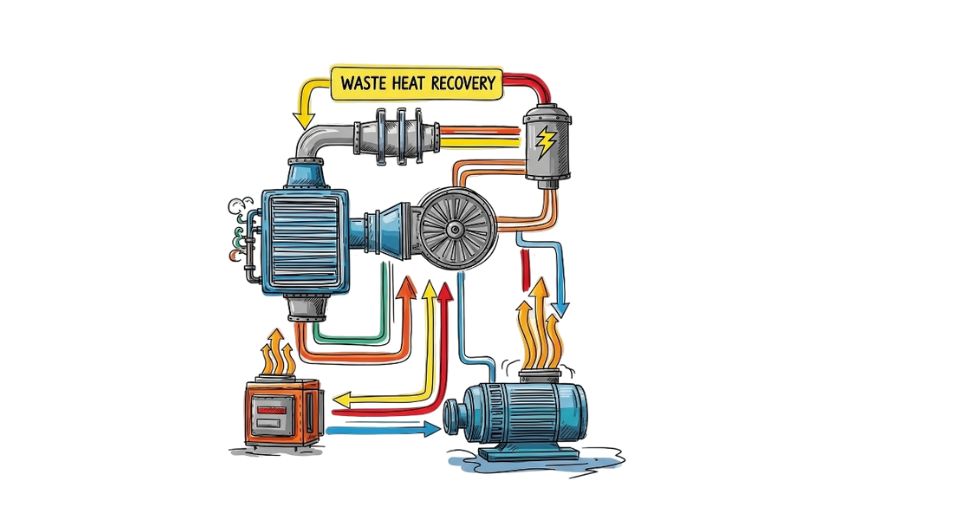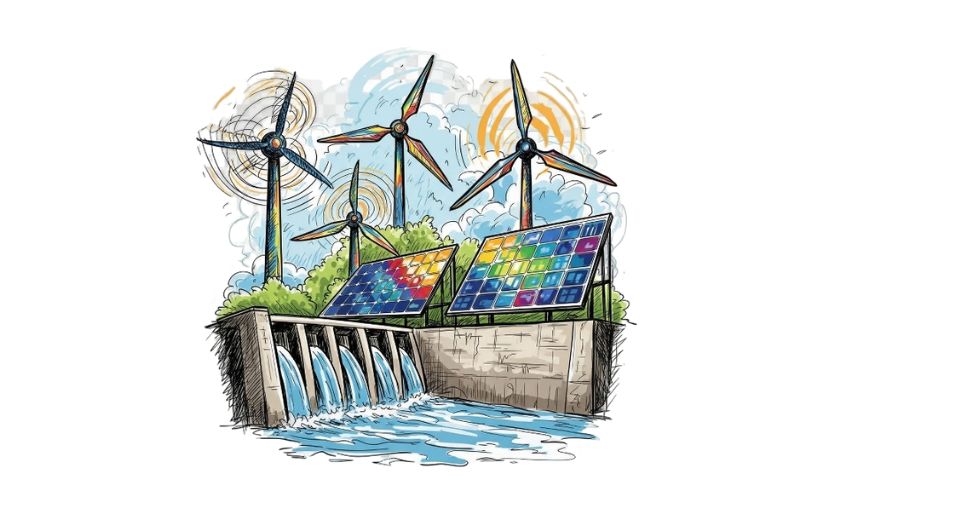MARKET OVERVIEW
The Global Wave and Tidal Energy market moves through the renewable energy sector that aims to tap the powers of ocean waves and tidal currents for electricity generation. It will continue to attract attention as the clean energy source that promises consistency and predictability in power generation as countries look for sustainable alternatives to fossil fuels. With the existence of vast ocean resources throughout the world, the Global Wave and Tidal Energy market will increasingly become a critical contributor to the future of renewable energy solutions.
Electricity generation from the movements of waves and tides has good potential, and the Global Wave and Tidal Energy market is going to further develop technologies that efficiently capture and convert this kinetic energy into usable power. Unlike most renewable energy sources, tidal energy is sufficiently predictable owing to the lunar cycles, which makes it a trustworthy substitute to conventional energy. New developments in the fields of wave energy converter and tidal stream generators will give the market an opportunity to connect to existing power grids providing a steady supply of electricity to coastal and inland regions.
With carbon emission pressure, the Global Wave and Tidal Energy market would find an incipient role during the transition toward a cleaner energy matrix. Wave and tidal power generation shall be supported with investments in infrastructure by countries in possession of long coastlines, along creating opportunities for technological advancement and energy security. The technological mainly shall rely on.
Just as the growth of Global Wave and Tidal Energy market will be achieved through a harmonious collaboration of governmental, research, and private sectors, so too will investments in research and development result in breakthrough turbine designs, mooring systems, and underwater transmission networks. Development work would focus not only on survivability under harsh marine conditions but would also lead to the identification of materials and construction techniques that increase the lifespan of wave and tidal energy infrastructure. Future developments will emphasize reducing the costs of maintenance and increasing energy capture so that this mode of power generation becomes much more competitive.
As the Global Wave and Tidal Energy market matures, processes concerning regulations would provide the steering wheel. Governments would create policies to lead marine energy exploitation, while safeguarding environmental sustainability. An important focus will thus be studying the impact on marine ecosystems, with resultant development of environmental-friendly energy solutions. By pairing with other renewable resources such as offshore wind farms, hybrid energy systems will be formed, contributing to maximized power output while minimizing ecological interruptions.
Generally, economic conditions will affect the Global Wave and Tidal Energy market greatly because energy producers will now be interested in cost-effective techniques towards scaling production. Manufacturing improvements and economies of scale will most likely fasten the dawn of marine energy as an easily accessible alternative for nations wanting energy independence for the long haul. The market will also observe the tie-up of energy companies with coastal communities towards localized solutions that can improve grid stability while reducing dependence on nonrenewable resources.
Innovation, collaboration, and ecology will become the most defining characteristic of the Global Wave and Tidal Energy market. Technology will, with time, become efficient thereby making wave and tidal energy systems even more integral to the global energy landscape. As these sustainable solutions grow in demand, this market will increasingly contribute to diversifying energy portfolios while facilitating adaptation efforts to climate change through renewables harnessed from the oceans.
Global Wave and Tidal Energy market is estimated to reach $ 11,049.58 Million by 2032; growing at a CAGR of 33.0% from 2025 to 2032.

GROWTH FACTORS
The Global Wave and Tidal Energy Market on a progressive way, as long as technological advances continue, getting energy from ocean waves and tidal currents will become more efficient and cost-effective for such use by governments and private investors who see viability in these energy sources. Application of increased funding and research is towards improving performance and scalability. Becoming a green nation that reduces energy reliance from fossil fuels and increases energy demand through renewable energy offers a bridge path in the transition from fossil fuel to renewable energy.
The main key driver is the clean energy demand. The target of many countries is becoming very ambitious toward carbon emissions, and wave and tidal energy can fulfill part of this important promise to lower carbon footprints. Unlike wind or solar power, whose dependability wholly depends on natural factors, generation from water is much more reliable, steady, and ever consistent throughout the year. Some regions may be interested in this consistency without any distractions so that they can incorporate part of this option into their regional mix. Technological advances in turbine design and methods to capture energy also will contribute to productive efficiency at competitive prices, with wave and tidal projects giving competition to most other renewables.
One of the foremost impeding factors is the high cost and big installation and maintenance charges. To set such systems running on water, these materials must be built to ensure durability with complicated equipment. Operating costs go high due to wear and tear incurred by rough ocean conditions. Apart from that, the approvals by the regulators are difficult and time-consuming because they need environmental assessments to be done on the ecosystems found in the marine environment. The work must be made easy by innovation and thoughtful policies so that this energy sector potential can be unleashed.
Innovation in power generation and storage technology will open new opportunities in the future. Further, using advances in materials and engineering will dramatically lower costs. As a result, wave and tidal energy will become even more competitive with other renewables. Enhanced government-private sector collaborative efforts will facilitate the faster transition between research and implementation of such technologies to mainstream. Born from the sustainable energy future for all randomly, the Global Wave and Tidal Energy market will grow and grow on itself to be a power source that much younger generations get into.
MARKET SEGMENTATION
By Energy Type
The need for renewable energy is increasing because the Earth is searching for sustainable alternatives to fulfill its increasing electricity requirements. The Global Wave and Tidal Energy market will be at the forefront of developing this trend, which will help define a future for clean energy. As dependency and concerns about fossil fuels rise, many nations are looking for efficient means of generating electricity from ocean sources. More attention will be addressed towards wave and tidal energy in comparison to other renewables, as they would be more reliable and consistent. Because ocean currents can be predictable, these energy systems will be able to provide a continuous supply of power, making them more attractive to potential investors at this time for adding renewable energy resources.
Wave and tidal energy are expected to constitute a large part of that energy market. It is expected that by 2025, the Global Wave and Tidal Energy market shall value at USD 1,216.82 million. That growth, along with government initiatives towards developing new technologies, will further encourage penetration and development of this sector. Thus, in consideration of tidal energy, which is valued at USD 725.72 million in the same year, it will receive undeterred investment benefits as companies will put their efforts into operating more efficiently. Systems are being built by engineers and scientists wherein energy can be harvested more efficiently while proving ecology benign. Improved turbine designs coupled with floating wave energy converters will cause generation to be more efficient and at the same time enable mass adoption of technology.
It will be very much dependent on the speed with which countries adopt ocean energy technologies. Governments and private funders will really be the ones who trigger growth by having investment in research and infrastructure development. Some countries have already started to integrate wave and tidal power into their energy mix by reducing the traditional power sources. The advancement of technology promises to complement this by reducing installation costs so that these energy solutions become affordable. By locating power plants in strategic locations, the areas for wave activity and tidal movements along coastal regions will be maximized.
Ensuring that disruption to the marine ecosystem is minimized will be one of the most major challenges. Towards that end, companies will design energy systems such that they work together with life in the water in a way that doesn't do any harm to the fish and other aquatic species. Sustainable materials and eco-friendly construction techniques will become commonplace in industry so that energy production can be done responsibly.
Demand for clean energy is always growing; in the coming years, the Global Wave and Tidal Energy market will expand rapidly. With improved technology and heavy investment in terms of time and money, wave and tidal energy will become constituent parts of global energy systems in the near future with a stable and sustainable power source for generations to come.
By Technology
Countries look for alternative sources that might take the place of fossil fuels, and there will come a time when demand would rise for renewable energy. One of the numerous clean sources of energy is wave and tidal energy, which could power future needs. Technology innovation will evolve the Global Wave and Tidal Energy Market, making them more efficient and accessible in time. Governments and private entities will invest in mega projects, recognizing the long-term benefits of harnessing ocean power. Waves and tides are predictable compared to wind and solar energy, thus becoming very valuable in creating a stable electricity source that will continue the transition toward cleaner energy.
Energy generation innovation will shape the future of the Global Wave and Tidal Energy market. Future systems will continue emerging as technologies improve efficiencies related to existing ones. Tidal stream generators are becoming the new focus as they produce electricity using underwater current flow without the need for large dams. Such systems will find wider applications as the most economical method of generating electricity with the least environmental impact, while also making headlines about the improvement of oscillating water columns, where using air pressure is by waves to push turbines. So, with these technologies used in the future, reliable energy sources will, of course, attract more investments.
Another method, Barrages, generates energy through tidal movement by manipulating water flow through turbines. They are expensive to construct but assuring solid energy generation; hence these are quite good for possible locations that are highly based on action of tides. It will have to be matured in terms of costs and environmental harm of such type of projects in the future. Other than these technologies, there are many more that have yet to emerge into the market as technologies are further modified to evolve better for capturing wave and tidal energy.
The growth of the Global Wave and Tidal Energy market will continue thanks to continuous advancements and an ever-increasing amount of government support. With investment policies promoting clean energies, the general growth will propel these technologies to use in a wide range of applications. As the price of efficiency improves and costs drop, wave and tidal energy becomes more crucial in the global energy solutions basket. Innovations will have to be employed in keeping companies in this sector competitive, developing economically viable and sustainable technologies. Future improvements and rising interests in renewable energy will only make the prospects for wave and tidal power brighter and add to the foundation of a healthier, stable energy future.
By Application
The Global Wave and Tidal Energy market will take renewable energy into the future, as it is now the answer to sustainable power generation for meeting the increasing electricity demands of the world. With fossil fuels being less and less dependable due to the environment and the limited supply, new energy sources are becoming the focus. Wave and tidal energy are among them because of predictability and vast potential available. Unlike solar or wind, the generation doesn't depend on the weather; therefore, oceans provide a more predictable supply making it select it as a viable option for long-term planning.
Power generation is one of the primary applications of wave and tidal energy. In that context, some coastal countries are assessing the potential for ocean energy utilization as support to the national grid and to the clean electricity grid. Slowly but surely, efficient energy conversion systems are being integrated into existing infrastructures to make marine power even more accessible. In the future, this equipment would be expected to reduce costs and become more favorable and statewide for development. Investment will get into this area where the entire world will be for greener policy, and this will construct better energy capture and storage schemes.
Wave and tidal energy, added to electricity generation, can also be used for desalination: the conversion of seawater to potable water. Given that freshwater is becoming increasingly scarce in many arid areas around the world, the potential of producing clean drinking water from ocean energy could revolutionize things. Unlike conventional desalination plants, dependent on fossil fuels, marine energy-powered systems will facilitate an environmentally sound way of supplying water without adding to carbon emissions. Future developments could be directed toward improving the efficiency of desalination units, enabling them to serve large areas at minimal environmental cost.
The advancement of the Global Wave and Tidal Energy market will continue to be anchored on partnerships between governments, research institutions, and private companies. Policies that foster innovation and infrastructure development will play a critical role in achieving progress in this regard. With improved technology, more and more coastal areas will be able to utilize ocean energy, reducing dependence on nonrenewable sources. One day, people might use hybrid energy systems combining wave and tidal energy and other renewables for a solid and diverse energy supply.
It is thus the environmental problem as well as the sustainable solutions for which ocean energy has the potential to become a branded player in global energy portfolios for the future. As research goes on and investments continue to increase, wave and tidal energy could change the face of how countries supply themselves with energy and water, all paving the way for future generations to come.
|
Forecast Period |
2025-2032 |
|
Market Size in 2025 |
$1,711.85 million |
|
Market Size by 2032 |
$ 11,049.58 Million |
|
Growth Rate from 2025 to 2032 |
33.0% |
|
Base Year |
2024 |
|
Regions Covered |
North America, Europe, Asia-Pacific, South America, Middle East & Africa |
REGIONAL ANALYSIS
The Global Wave and Tidal Energy market has a viable future due to the increased demand for renewable options. With climate change and the exhaustion of traditional energy sources being great concerns, ocean waves and tides are being fast-tracked as energy sources. This market is anticipated to show growth as technology is making wave and tidal energy more productive and economically bandable. Private investors and governments are now seeing the potential of this sector and are stepping up funding and research efforts to upgrade infrastructure and implementation.
In North America, ways to integrate wave and tidal energy into existing power grids are under consideration by the U.S., Canada, and Mexico. The U.S. is actively funding research projects to improve energy conversion technologies, while Canada has many potential sites for development due to its very long coastline. Mexico is also looking at possible sites for developing wave energy projects on both the Pacific and Atlantic Ocean sides.
Europe remains firmly on top of the Global Wave and Tidal Energy market as countries like the UK, Germany, France, and Italy seal the deal. The UK has been a true pioneer in this field and has invested heavily in large-scale projects meant to meet a significant portion of the country's energy requirements from wave and tidal power. Assisted by this outlook, Germany and France are considering how to incorporate these renewable sources into the wider mix of energy options, while Italy is evaluating along its coastline. Furthermore, other European countries are also investing in research and development of infrastructures, which proves exhaustively that the region is at the helm of this new industry.
The Asia-Pacific region is likely to witness massive development in wave and tidal energy projects, with countries such as India, China, Japan, and South Korea making fast progress. China is now playing a major role in the market of renewable energy with its investments, while Japan is putting to full use the energy from the ocean due to its island geography. South Korea's considerations for tidal power generation project aims to deliver environmental-friendly energy to its people. Given its long shoreline, India has considerable potential for wave-energy-based infrastructure projects, thus contributing to the growth of this sector as a whole.
In South America, Brazil and Argentina are starting to examine the potential for wave and tidal energy. Brazil's extensive coastline is a strong platform for developing future projects, and Argentina is investing in research to see how ocean energy can work for it. All this is likely to further encourage even newer entrants in the region to consider sustainable energy options.
The surge in interests in using ocean energy for wave and tidal energy developments in Africa and the Middle East is gaining momentum. Gulf countries, Egypt, and South Africa are looking at these energy options. The main concern for all GCC countries is the diversification of energy sources and reduction of dependence on fossil fuels. The Mediterranean and the Red Sea are host to potential marine energy project sites in Egypt, while South Africa is exploring ways to harness ocean energy within its renewables portfolio. Other countries in this region are increasingly drifting toward realizing the advantages brought by wave and tidal power, thus enhancing research and generation pilot projects.
The global wave and tidal energy market, due to its innovation and receptive reproduction policies, continues to grow and will therefore sustain its growth rate. Global growing interest gives this sector a good chance of being a leading actor in the future for renewable energy, giving generations reliable and sustainable energy in the coming decades.

COMPETITIVE PLAYERS
The Global Wave and Tidal Energy market is slowly being empaneled into the chorus of global orientations towards sustainable energy alternatives. As dependence on fossil fuels is increasingly reduced in favor of ocean-derived energy, this market will be a major player in designing the future of renewable energy as a steady and predictable source of power. Whereas wind and solar might have severe intermittencies in generation, wave and tidal energy are much more appealing for long-term energy planning because of the constant flow of the resultant electricity.
Major companies in the industry will seek to maximize these developments by investing in enhanced efficiency and scalability. They include SAE Renewables, Aquanet Power, Orbital Marine Power, Verdant Power, ANDRITZ, Eco Wave Power, Leask Marine Ltd, Nova Innovations, AREG, CorPower Ocean, Orbital Wave & Tidal Power, and AW-Energy. All these companies have put huge investments in research and development, aiming to improve energy capture mechanisms and decrease installation cost while maintaining the minimum environmental impact. Indeed, Western governments seem set to roll out important clean energy initiatives that will further develop the fortunes of such businesses.
One major challenge that this market is facing is costs related to the development and maintenance of wave and tidal energy systems. The infrastructure necessary for ocean-based energy solutions is unique because it requires technology that is specially designed and can withstand the harshest marine conditions, unlike conventional energy sources. However, costs of manufacturing and operation are expected to become cheaper as innovations lead to development. Several studies and experiments are currently being conducted by companies in newer materials, advanced turbine designs, and AI-driven monitoring systems that are meant to optimize energy output and lower maintenance costs.
It is expected that the collaboration between private enterprises and government bodies will speed up the growth of this market. Policies driving the adoption of clean energy and financial incentives are further attracting investment in the model. Adoption of digital solutions such as real-time data analysis and automation is proving to improve profitability. As coastal nations come to appreciate the potential of wave and tidal energy, demand for them will steadily rise.
The upcoming future projects a great possibility for the Global Wave and Tidal Energy market. The sector will play a key role in the overall renewable energy mix at a global level as technology for cleaner energy continues to improve. Companies that innovate and adapt quicker will most likely dominate this space. As the industry advances, wave and tidal energy might well emerge as a mainstream power source contributing significantly to a sustainable energy future. How fast and at what rate this market matures will ultimately depend on the competing organizations.
Wave and Tidal Energy Market Key Segments:
By Energy Type
- Wave Energy
- Tidal Energy
By Technology
- Tidal Stream Generator
- Oscillating Water Columns
- Barrage
- Others
By Application
- Power Generation
- Desalination
Key Global Wave and Tidal Energy Industry Players
- SAE Renewables
- Aquanet Power
- Orbital Marine Power
- Verdant Power
- ANDRITZ
- Eco Wave Power
- Leask Marine Ltd
- Nova Innovations
- AREG
- CorPower Ocean
- Orbital Wave & Tidal Power
- AW-Energy
WHAT REPORT PROVIDES
- Full in-depth analysis of the parent Industry
- Important changes in market and its dynamics
- Segmentation details of the market
- Former, on-going, and projected market analysis in terms of volume and value
- Assessment of niche industry developments
- Market share analysis
- Key strategies of major players
- Emerging segments and regional growth potential








 US: +1 3023308252
US: +1 3023308252






